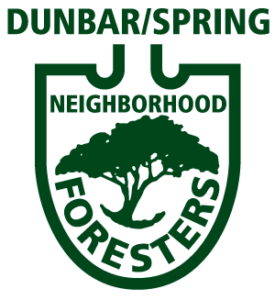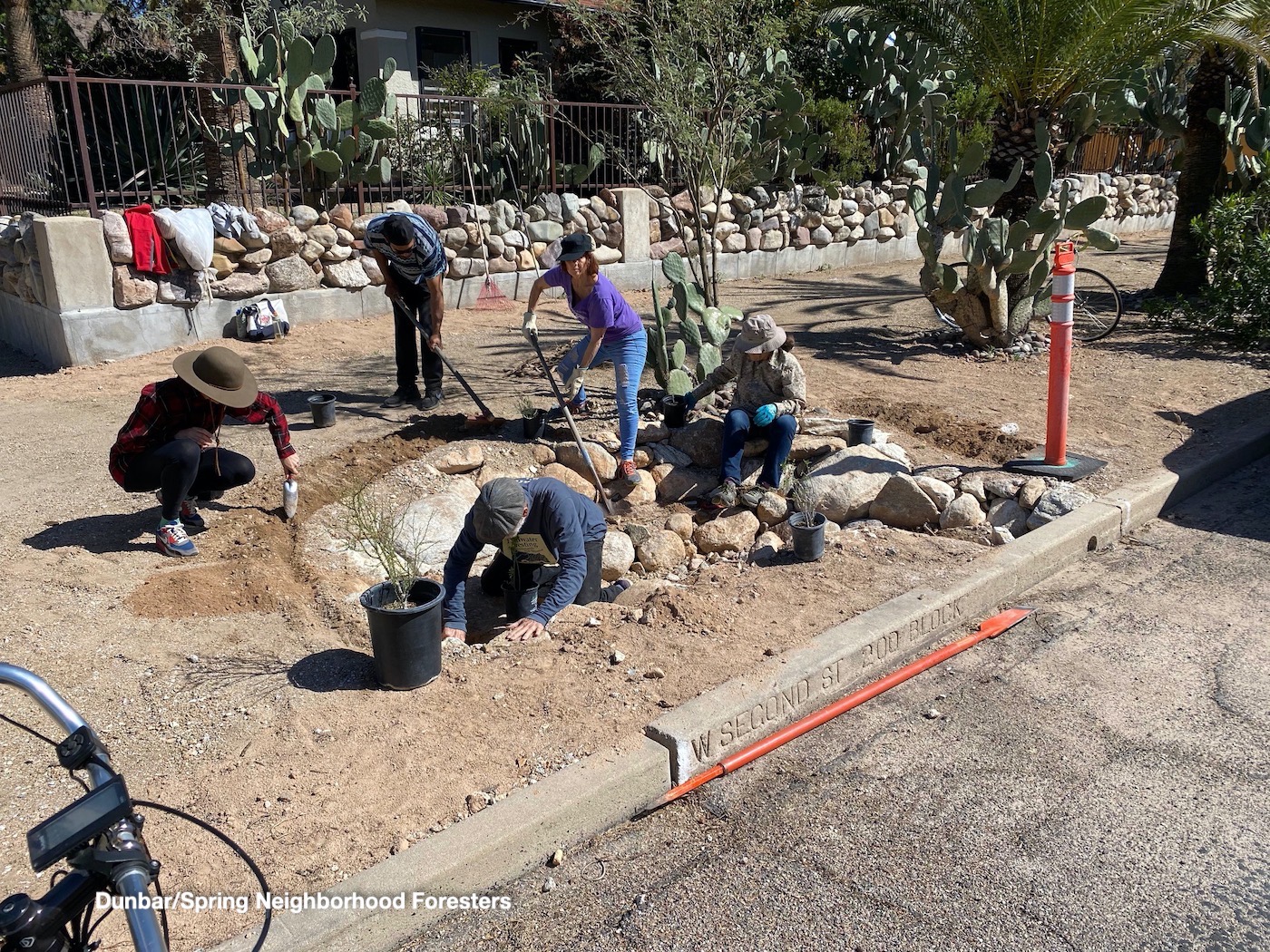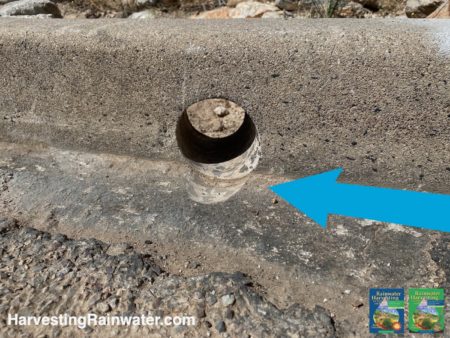This planting of rain, trees, understory, & wildflowers is occurring in the West University neighborhood, but the planting event is open to anyone from any neighborhood, and is a great opportunity to see how such an event, or other Neighborhood Forester endeavors, could be organized elsewhere.
Date: Sunday, April 25, 2021.
The stormwater eddy basins (each having over 4,500-gallon annual capacity) were just completed – so now we can plant. We plant the rain before we plant the plants!
Time: 8:00 am for a planting demonstration, then keep going to various parts of the neighborhood. We start early to beat the heat. The demonstration will show you how to plant the rain to maximize its potential, how to plant food-bearing native trees by seed and/or with nursery stock to maximize passive summer shading/cooling, and how to recycle/plant prunings and leaves as fertility-building, carbon-sequestering, pollutant-filtering, water-harvesting mulch.
End time of 11am is approximate.
Meeting spot:
924 N. 6th Ave, Tucson AZ 85705
Once we finish planting there, we’ll move to the following locations in West University:
950 N. 6th Ave
612 E. 1st Street
The day before at 8am on Saturday, April 24 we’ll do a planting in the Dunbar/Spring Neighborhood – come join us!
Come join us in planting native shade trees and understory vegetation within or beside water-harvesting earthworks in the public rights-of-way. The idea is to plant native food-producing, flood-controlling, wildlife-habitat-producing, beautiful, air- and water-filtering, living air conditioners. Street trees that shade up to 75% of the street’s surface can also cool summer neighborhood temperatures by up to 20ºF. This enhances the walkability and bikeability of our neighborhoods, which improves health and drops crime. When we harvest street runoff to irrigate the street trees, we also reduce water consumption (by reducing our use of drinking water from the municipal supply) and we reduce downstream flooding. Thus far this annual event has resulted in over 1,600 trees being planted in our neighborhood, hundreds of understory plants, and contributed to annually harvesting over one million gallons of stormwater that used to go to the stormdrain—let’s keep going!
What to bring: WEAR A MASK, work clothes, sun hat, gloves, snacks, and water as we’ll be working outdoors. A pointed shovel, pruning tools, and/or hard rake would also be great (and we’ll have some extra tools on hand for those lacking them).
Water-Harvesting-Basin-Creation Service:
This year we are working with licensed contractors (John Litzel of Little John Excavating and Jeff Rhody of Dryland Design) to:
• Dig the basin(s) [average size is 5-8 feet long x 5 feet wide x 1 foot deep] with a backhoe
• Remove excavated soil with backhoe and dump truck
• Deliver and hand-set local Catalina granite rock to stabilize the basin banks and planting terraces.
• Drill core holes or curb cuts in the street curb to direct street runoff into the street-side basin for a lifetime of free stormwater irrigation and flood control
• Handle the permitting
• You’ll also get advice/input on ideal basin placement and plant selection.
Costs
Average price (after City Rainwater Harvesting Rebate) is expected to be $500 per basin. Actual average cost is $1,000 per basin with curb coring, but the rebate covers half the cost up to $500.
This is an amazing deal! The average basin can capture over 4,500 gallons per year (assuming average annual rainfall of 11 inches). Trees and other plantings planted with such basins grow to be healthier and larger, and have faster growth rates than those without such basins. And the basins bottoms and planting terrace can be seeded or planted with beautiful native understory plantings. See here for ideas of understory plantings and their ideal planting location.
This basin creation price is lower than market rates because we are able to get a bulk deal by pooling many installations and permits into one—it pays to collaborate as a community! We coordinate the design services, underground utility markings, permitting, inspection, and & contracting so you don’t have to!
Excavation is done by a backhoe and operator, excavated soil is removed from site (unless homeowner wants to use it elsewhere on property), and includes rock, professional rockwork, curb coring, and wood chip mulch. This new set up with contractors is more sustainable than our past program, because in the past a few volunteers would have to work for an additional week to finish up what was not completed in the public planting/basin creation day. Additionally, under the current program basins are larger with much higher capacity – resulting in far more free irrigation stormwater and much more flood control.
You can see an example of Dryland Design’s rockwork in the public right of way in front of 236 W. University Blvd. (along with the photos below).
Native trees (5-gallon size) cost $28 each. Understory plants (1-gallon size) cost $12 each. Native wildflower seed is included in basin price.
We highly recommend you plant trees, understory plants, and native wildflower seed all at the same time. This makes irrigating them all (to get them established) much easier as you are already irrigating, and quickly establishes a living sponge of beautiful, sheltering, wildlife-supporting, vegetation including edible and medicinal species.
Expand or enhance existing water-harvesting basins
The basin creation service can also be used to enlarge or enhance existing (but perhaps undersized) basins.
Create a curb core to an existing street-side basin
Average cost per 4-inch diameter core hole drilled is $75. A fantastic deal, because once done you get free stormwater for life – as long as you keep the core inlet clear of debris.
ALL TREE, BASIN, AND CURB CORING ORDERS MUST BE IN BY JANUARY 1, 2020.
Email Brad at brad@harvestingrainwater.com or Omar at nativeroots.az@gmail.com to get on the list and get your tree-order form(s), maintenance agreements, and checklist to ensure your site will meet the requirements of this program and the city permit.
You can also EMAIL US TO GET ON THE LIST FOR NEXT YEAR
• 2021 Tree & Understory Order Form is needed for trees that are to be planted in public right-of-way. The prices of these trees have been reduced/subsidized thanks to Trees for Tucson and neighborhood nurseryman Sky Jacobs.
• Maintenance/Stewarding Agreement must be filled out, signed, and handed in for every address ordering trees.
Requirements to get the Rain and Tree Planting help of Dunbar/Spring Neighborhood Foresters program:
1. Invasive weeds must be removed from all areas you want to plant rainwater and trees BEFORE the rain and trees are planted.
2. Must have a continuous pedestrian path minimum 5-feet wide, cleared to a height of 7 feet, and having an approved path surface in the public right-of-way adjoining your property.
Approved pathway materials that maintain public access and walkability:
• Compacted native soil. Free and already on site!
• Screened organic material (woodchip) mulch no larger than 1/2-inch in particle size.
(Do not apply mulch thicker than a 1-inch depth. Thicker depths bog down small wheels of babycarriages and wheelchairs).
One local mulch supplier is Tank’s Green Stuff.
• Compacted or stabilized ¼ to 3/8-inch minus decomposed granite (DG).
There are natural polymers that can be mixed in with the decomposed granite to better hold it together and stabilize it. DG is available from local landscape material suppliers. (Gary Wittwer, past Landscape Architect, City of Tucson Transportation Department told me this can be installed to be American Disabilities Act (ADA)-accessible
• Pavers/brick, which can be installed within the grade/slope tolerances of the ADA
• Maintained concrete sidewalks (ADA-accessible)
Non-approved, non-accepted path materials that inhibit public access and walkability:
• Loose rock or gravel
• Decomposed granite larger than 3/8-inch in particle size
• Course organic material (woodchip) mulch larger than 1-inch in size; or organic mulch thicker than 1-inch depth.
NOTE: If you would like trees for planting on private property, visit https://tucsoncleanandbeautiful.org/trees-for-tucson/ or call (520) 791-3109. Native and fruit trees are available (ideally you set up a greywater-harvesting system for these fruit trees first, as they will require more water than native trees as well as regular watering in the hot and dry seasons). Note that the City of Tucson has a greywater-harvesting rebate covering up to half the cost of a greywater system with a rebate cap of $1,000.

Beautiful rock work stabilizing basin banks and planting terraces. Local surface rock – Catalina granite – used.











